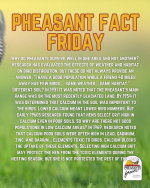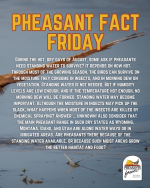remy3424
Well-known member
I knew the hens needed calcuin for egg laying and knew they sought it out. I also assumed that if one lived in such an area where natural calcium was low, that one could improve this by adding crushed/pulverized limestone. Well, it seems that might not be the entire problem in those areas. If I could find someone locally with pulverized limestone, I would still add it to my gravel grit areas, just to help make sure they had less trouble finding the calcium.
Follow PF on FB and you get at least a weekly informative/interesting post from them.
A cool morning today, temp in the 50s! Season is not that far away!
Facebook
 www.facebook.com
www.facebook.com

Follow PF on FB and you get at least a weekly informative/interesting post from them.
A cool morning today, temp in the 50s! Season is not that far away!
 www.facebook.com
www.facebook.com


